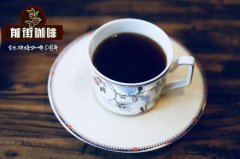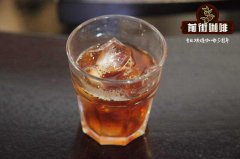Is semi-washing the same as wet planing? What's the difference between them?

Professional coffee knowledge exchange more coffee bean information please follow the coffee workshop (Wechat official account cafe_style)
Semi-washing is a relatively new and rare method. This method is also suitable for processing local coffee only in specific areas of some countries where there is a long drying period in the climate. The coffee produced by this method is sticky, and the mucus is not removed with fermentation in the tank. Therefore, the coffee produced by this semi-wet treatment contains the characteristics of both wet treatment and drying treatment. The acidity, sweetness, seasoning, and flavor of this kind of coffee are quite good; the only drawback is that the taste of such coffee is not as strong as that produced by pure drying or washing.
Bean selection: first put the coffee fruit into the big water tank, move the red fruit and semi-green and semi-red fruit into the pulp sieving machine to remove the pulp and impurities.
Remove pectin: take out the coffee beans, do not need to take the sun, let alone pour into the sink to ferment, but directly into the next pectin scraper, only a small amount of water can scrape away the sticky pectin chips mechanically.
Sun exposure: then take out the raw beans with a smooth surface and expose them outdoors until the water content is reduced to 12%.
Wet shaving (Wet-Hulling) is the traditional treatment of Indonesian Sumatran coffee, that is, when the raw beans are half-dried and the moisture content is as high as 30% to 50%, the seed shells are removed first, and then continue to be dried in order to solve the dilemma of drying for too long. As the drying time is shortened to two to four days, the fermentation period of coffee beans is shortened, and the acidity decreases much, but the relative thickness increases, with obvious aromas of caramel and fruit, even with aromas of herbs or grass and wood. this is the unique regional fragrance of Sumatra.
However, the effect of early removal of the seed shell is that the raw beans are half-dried without the last two layers of protection (note: the four layers of protection of coffee beans: pericarp, pectin, seed shell, silver skin), which is like taking off your clothes and basking in the sun. Although the wet planing method solves the problem of drying time, the relative probability of raw beans contaminated by molds, fungi and yeasts is also greatly increased. Paradoxically, however, these factors have become the key factors in creating Manning's special aroma.
Another feature of the wet planing method is the increase in the probability of the so-called "sheep's hoof beans". Because the raw beans are planted with a shell planer in the semi-soft stage when they are still very wet, the fragile soft wet raw beans are very easily cracked, broken or scratched by mechanical force, resulting in the so-called sheep's foot beans and scratched beans, resulting in the deterioration of the selling phase of raw beans.
Important Notice :
前街咖啡 FrontStreet Coffee has moved to new addredd:
FrontStreet Coffee Address: 315,Donghua East Road,GuangZhou
Tel:020 38364473
- Prev

What is the pine house hand punch? What are the characteristics of coffee made with pine house style?
Professional coffee knowledge exchange more information about coffee beans Please follow the coffee workshop (Wechat official account cafe_style) Japanese coffee is brewed by hand. Generally, handmade coffee is mainly made by siphon plug kettle, mocha kettle and follicle brewing, and manual brewing coffee can faithfully present the different personalities of different coffee beans in Japanese cafes, mostly single.
- Next

What is Japanese iced coffee? The method of making Japanese iced coffee.
Professional coffee knowledge exchange more coffee bean information please follow the coffee workshop (Wechat official account cafe_style) if you are tired of drinking cold coffee, don't worry, you are not alone, there are many people want to try a new coffee ice drink, maybe Japanese iced coffee is your best choice! Many people think that if you soak the coffee powder in ice water overnight, the coffee will become insipid.
Related
- What is the meaning of lactic acid fermentation with coffee bean treatment?
- How to judge the state of foam by sound?
- How does the latte pull out the unicorn pattern? Come to get for a little trick to improve the flower pull!
- Will flower pulling affect the taste of the latte?
- Do you know the history of coffee?
- The difference between honey treatment and sun washing what is raisin honey treatment?
- What kind of milk can a novice use to make coffee foam to keep the foam longer? The correct method and skills of milking tutorial sharing
- Why do washed coffee beans taste sour? Flavor characteristics of washed Coffee
- Introduction to the skill of how to practice the size and height of water injection around the circle of hand-brewed coffee
- How do beginners practice coffee flower drawing from scratch?

